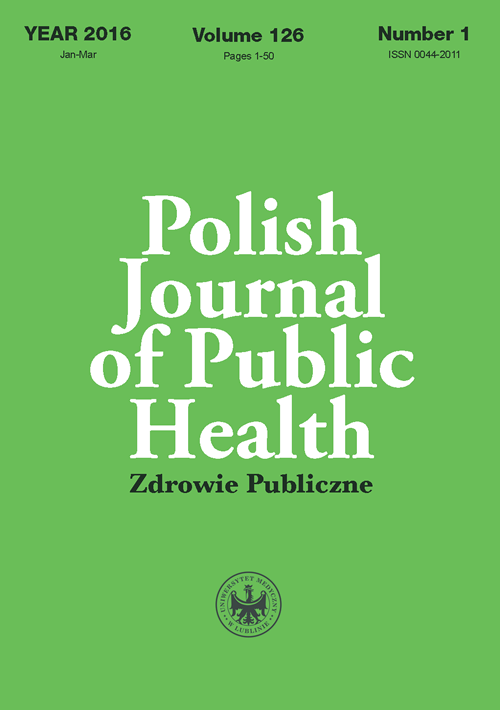Pregnant women’s knowledge on early orthodontic prevention – a questionnaire survey
DOI:
https://doi.org/10.1515/pjph-2016-0006Keywords:
orthodontic prevention, children, pregnant womenAbstract
Introduction. Ensuring proper conditions for the development of the masticatory organ of the child can prevent or reduce the incidence of malocclusion.
Aim. The study aimed to assess the knowledge of mothers on selected elements of early orthodontic prevention.
Material and methods. A questionnaire survey was carried out among 234 pregnant women and women in childbirth from Lower Silesia, Lublin and Lubuskie voivodships. The survey included questions about demographics of mothers, such as age, place of residence, education level, and 10 questions on selected elements of early orthodontic prevention.
Results. The knowledge of mothers on the early orthodontic prevention is associated with the level of education and the place of residence – women with higher education and living in large cities have the greatest expertise in this field, although it is still inadequate in general population of women.
References
1. Łabiszewska-Jaruzelska F. Ortopedia szczękowa. Warszawa: PZWL; 1997, p. 205-6.
2. Polek A, Szyper-Szczurowska J, Loster BW. Rola pediatrów i lekarzy rodzinnych w profilaktyce wad zgryzu u dzieci w okresie niemowlęcym i poniemowlęcym. Dent Med Probl. 2013;50:328-40.
3. Bueno SB, Bittar TO, Vazquez Fde L, et al. Association of breastfeeding, pacifier use, breathing pattern and malocclusions in preschoolers. Dental Press J Orthod. 2013;18(1):30.e1-6.
4. Moimaz SA, Garbin AJ, Lima AM, et al. Longitudinal study of habits leading to malocclusion development in childhood. BMC Oral Health. 2014;14:96.
5. Montaldo L, Montaldo P, Cuccaro P, et al. Effects of feeding on non-nutritive sucking habits and implications on occlusion in mixed dentition. Int J Paediatr Dent. 2001;21:68-73.
6. Majorana A, Bardellini E, Amadori F, et al. Timetable for oral prevention in childhood - developing dentition and oral habits: a current opinion. Prog Orthod. 2015;16:39.
7. de Castilho LS, Abreu MH, de Oliveira RB, et al. Factors associated with mouth breathing in children with developmental disabilities. Spec Care Dentist. 2016;36:75-9.
8. Thomaz EB, Cangussu MC, Assis AM. Maternal breastfeeding, parafunctional oral habits and malocclusion in adolescents: a multivariate analysis. Int J Pediatr Otorhinolaryngol. 2012; 76:500-6. [CrossRef] [Web of Science]
9. Karłowska I. Zarys współczesnej ortodoncji. Warszawa: PZWL; 2013. p. 70.
10. Al-Shahrani N, Al-Amri A, Hegazi F, et al. The prevalence of premature loss of primary teeth and its impact on malocclusion in the Eastern Province of Saudi Arabia. Acta Odontol Scand. 2015;73:544-9.
11. Grippaudo C, Pantanali F, Paolantonio EG, et al. Prevalence of malocclusion in Italian schoolchildren and orthodontic treatment need. Eur J Paediatr Dent. 2013;14:314-8.
Downloads
Published
Issue
Section
License
Copyright (c) 2016 Polish Journal of Public Health

This work is licensed under a Creative Commons Attribution-NonCommercial-NoDerivatives 3.0 Unported License.


